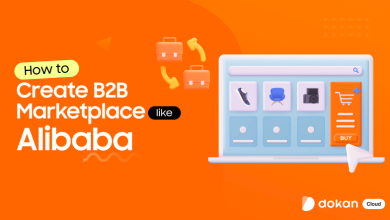How To Build A Marketplace Like Walmart
[ad_1]
With over 10,000 stores in 20 countries and a $70.3 billion global revenue, Walmart is the largest retailer in the world.
Walmart started in 1945 when founder Sam Walton bought a small retail store in Newport, Arkansas. From there, it grew rapidly. Walmart became a dominant force in retail through innovation and strategic adaptability.
Walmart’s eCommerce strategy has set a benchmark, even outperforming Amazon during the pandemic with higher sales growth.
In this write-up, we’ll explore Walmart’s winning business practices and learn how to build a successful eCommerce platform inspired by their approach.
Let’s start-
The Elements Behind Walmarts Success
Walmart’s business model is based on providing affordable prices, efficient supply chain management, and a vast global reach.
Its success comes from the following key elements:
1. Low-Cost Leadership
Walmart uses its scale to negotiate favorable deals with suppliers. It enables low procurement costs.
These savings are passed on to customers, allowing Walmart to maintain its reputation for “Everyday Low Prices.”
2. Efficient Supply Chain
Walmart is popular for its cutting-edge supply chain management, which uses technologies such as real-time inventory tracking, data analytics, and automation.
Its large network of distribution centers ensures fast and cost-effective delivery to stores, minimizing overheads.
3. Broad Product Range
Walmart appeals to a wide audience with its mix of groceries, electronics, apparel, and more.
Its “one-stop shop” approach is convenient for customers, increasing traffic and sales.
4. Strategic Store Locations
Walmart strategically places physical stores in high-traffic areas and underserved markets. Its smaller store formats, like Walmart Neighborhood Markets, cater to specific local needs while complementing larger supercenters.
5. Omni-Channel Integration
Walmart has embraced eCommerce and digital transformation.
Services like Walmart.com, grocery pickup, and delivery have made shopping seamless across online and offline channels. Its investment in technologies like mobile apps and augmented reality further improves the customer experience.
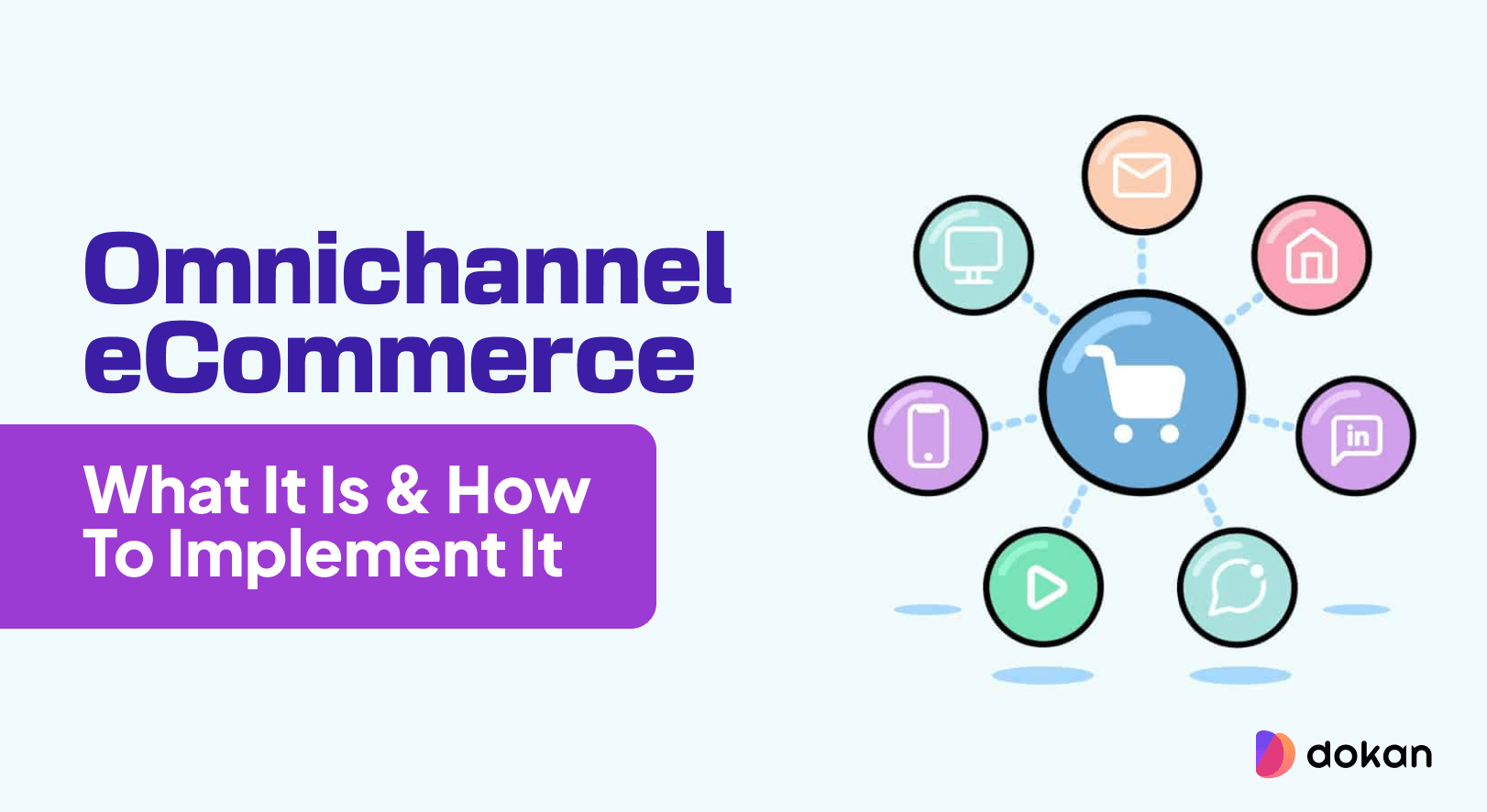

6. Strong Private Label Presence
Walmart offers private-label products that are affordable and high-quality, driving customer loyalty and higher profit margins.
7. Workforce and Training
Walmart’s workforce management is another pillar of its success.
Extensive training programs and career advancement opportunities improve employee productivity and satisfaction, directly benefiting customer service.
8. Customer-Centric Approach
Understanding its customers’ needs has always been a priority for Walmart. Through initiatives like rollback prices, price matching, and localized store assortments, it continually tailors its offerings to meet customer expectations.
9. Innovation and Technology
Walmart invests heavily in technology, including AI, robotics, and blockchain, to enhance supply chain efficiency, improve customer experiences, and streamline operations.
If we summarize Walmart’s success, then we will find-
- Walmart’s massive scale allows it to dominate markets and negotiate unmatched deals.
- Walmart continuously evolves, from expanding its eCommerce presence to offering services like Walmart+.
- Decades of consistent pricing and service have built customer loyalty.
- By supporting local initiatives and tailoring stores to community needs, Walmart establishes itself as a valuable local resource.
Walmart balances innovation with efficiency and customer satisfaction. This is why it has become a global retail powerhouse.
Now let’s see how to build a marketplace like Walmart.
Steps to Create a Marketplace Like Walmart
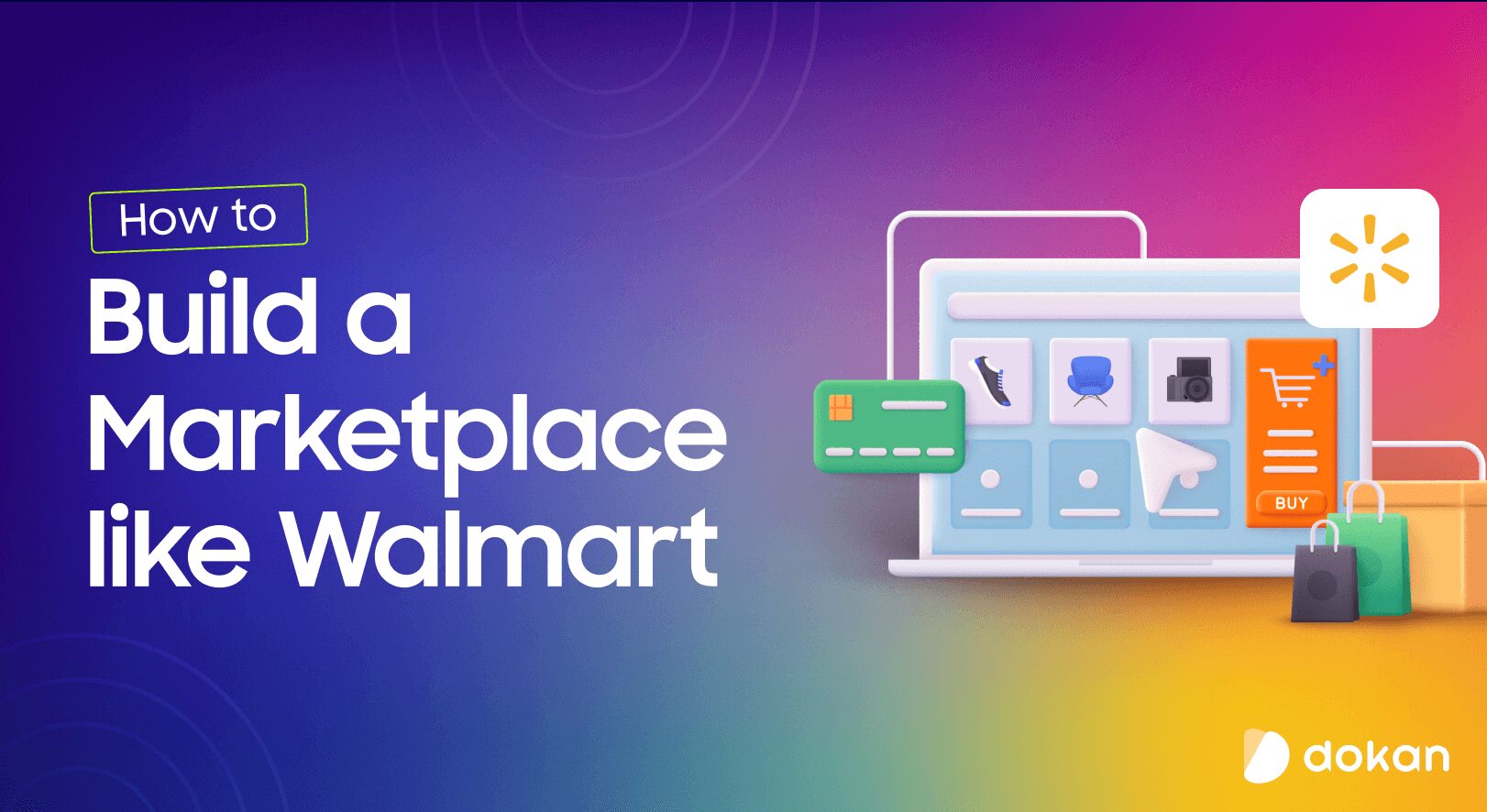

Now if you are motivated by the success story of Walmart and itching to get started with your own marketplace, this section is for you.
Here are the steps you need to follow to create a marketplace like Walmart-
- Choose the Right Marketplace Business Model
- Build a Marketplace Platform
- Step 1.1: Signup to Dokan Cloud Platform
- Step 1.2: Complete the Onboarding Process
- Step 1.3: Configure Marketplace Settings- General, Payment, Shipment, Tax etc
- Step 1.4: Create a Subscription Plan for Vendors
- Step 2.1: Activate Dokan to Create Your Multivendor Marketplace
- Step 2.2: Install a Dokan Compatible Theme
- Step 2.3: Configure Dokan General Settings
- Step 2. 4: Upload Products and Setup Admin Shop If You Want
- Step 2.5: Allow Vendors to Sign up to Your Marketplace
- Step 3: Onboard Your First Vendor
- Step 4: Launch Your Marketplace
- Step 5: Go for Promotion
- Step 1.1: Signup to Dokan Cloud Platform
- Launch Your Marketplace
- Go for Promotion
Let’s see the details-
1. Choose the Right Marketplace Business Model
The business model determines how your marketplace will generate revenue. Consider:
- Commission-based model: Take a percentage of each transaction.
- Subscription-based model: Vendors pay a flat monthly fee for platform access.
- Freemium model: Offer free access with paid upgrades, such as advanced analytics or featured product placement.
2. Build a Marketplace Platform
A marketplace platform allows you to launch quickly with core features and scale based on feedback. You need to add key features like:
- Vendor registration and product upload
- Buyer search and filtering tools
- Secure payment gateway
- Shipping settings
Platforms like Dokan Cloud Marketplace can help you build an MVP efficiently without heavy investment as it has a 14-day trial period and only $1/m for the first 3 months!!!
Dokan Cloud is a marketplace platform that enables users to easily create a multivendor marketplace platform. The platform possesses all the features to start a marketplace from scratch. You don’t need coding knowledge to start.


Dokan Cloud marketplace will provide you features like Walmart including-
- Registration via email or social media
- Verified vendor profile approval
- Marketplace builder with necessary widgets
- Product listing management
- Convenient search for products
- Order tracking and shipping details
- Refund request handling
- Multiple payment methods, including credit cards
- Coupon management
- Live chat system for buyers and suppliers
- Vendor subscription and commission adjustments
- Sales report generation
- Advance tax system
- Ratings and reviews for feedback
Want to know more about Dokan Cloud? Visit the features page.
But you don’t need to use a SaaS platform. If you are comfortable with the WordPress platform, then you can use the Dokan Multivendor Marketplace plugin as well. With the help of this plugin, you can turn that eCommerce store into a multivendor marketplace with a few clicks.
Dokan Multivendor is a popular marketplace plugin with 50000+ active installations and has all the features to get your marketplace off the ground. It integrates with popular payment gateways like PayPal, Stripe, Stripe Express, Mangopay, Razorpay, etc. The plugin also has a shipping tracking feature that helps customers keep track of their orders.


We will show you how to build a marketplace like Walmart with both platforms.
First, let’s see how to create a marketplace like Walmart using Dokan Cloud Marketplace-
Step 1.1: Signup to Dokan Cloud Platform
First, you need to sign up for the Dokan Cloud platform to get started. Dokan Cloud offers a 14-day trial period. So you will get plenty of time to explore and test the available features before you make your final decision.
Also, after purchase, you will only need to pay $1/month for the first 3 months. This will give you time to test if your idea is market fit.
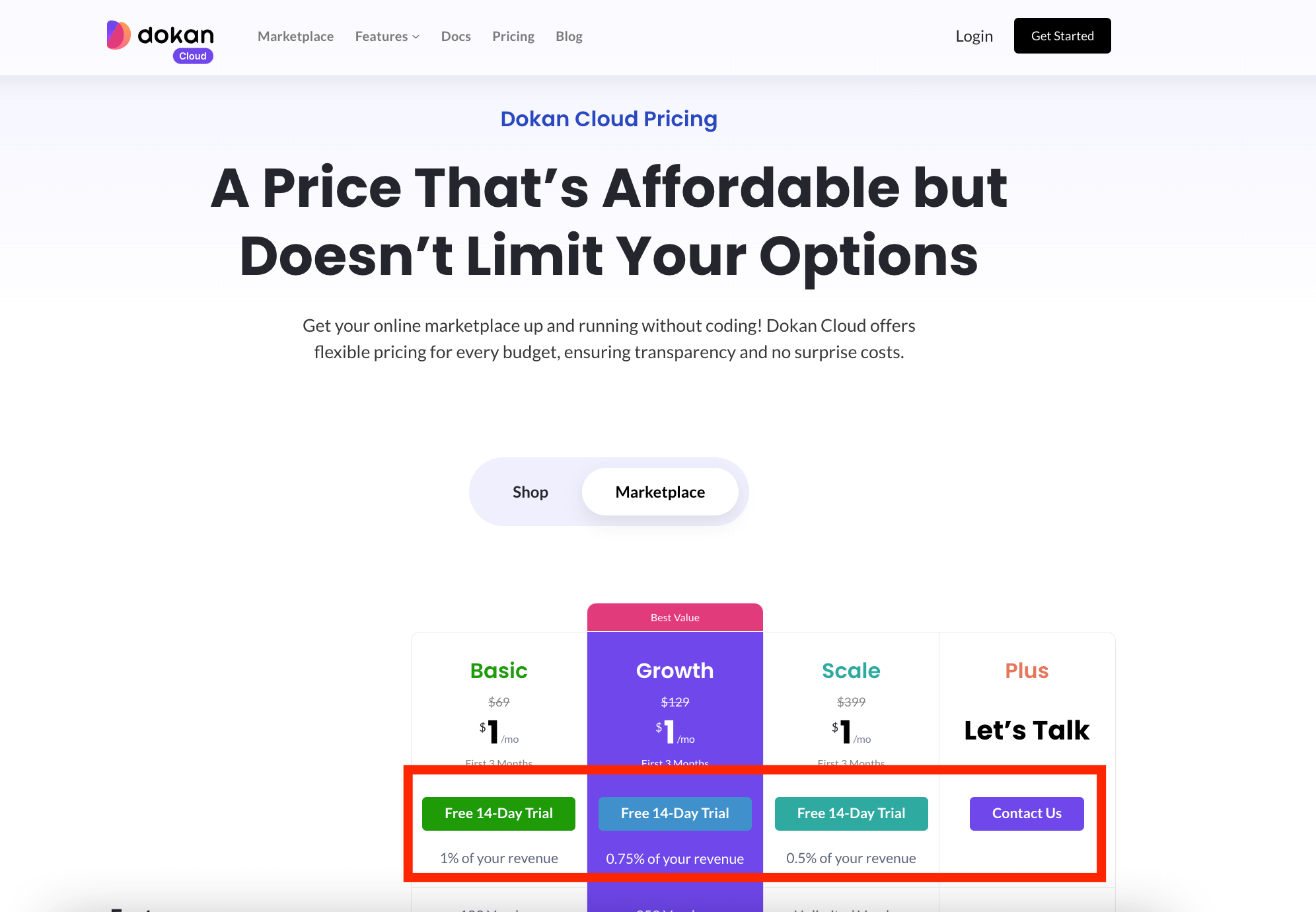

While signing up, you need to add your email address and set a password.


Dokan Cloud will take a few minutes to set up the marketplace and you will get a message that your marketplace is created.
Step 1.2: Complete the Onboarding Process
You need to complete the setup wizard in order to start your marketplace. Choose the Marketplace option, and add the necessary information like your store address, business name, etc to finish-
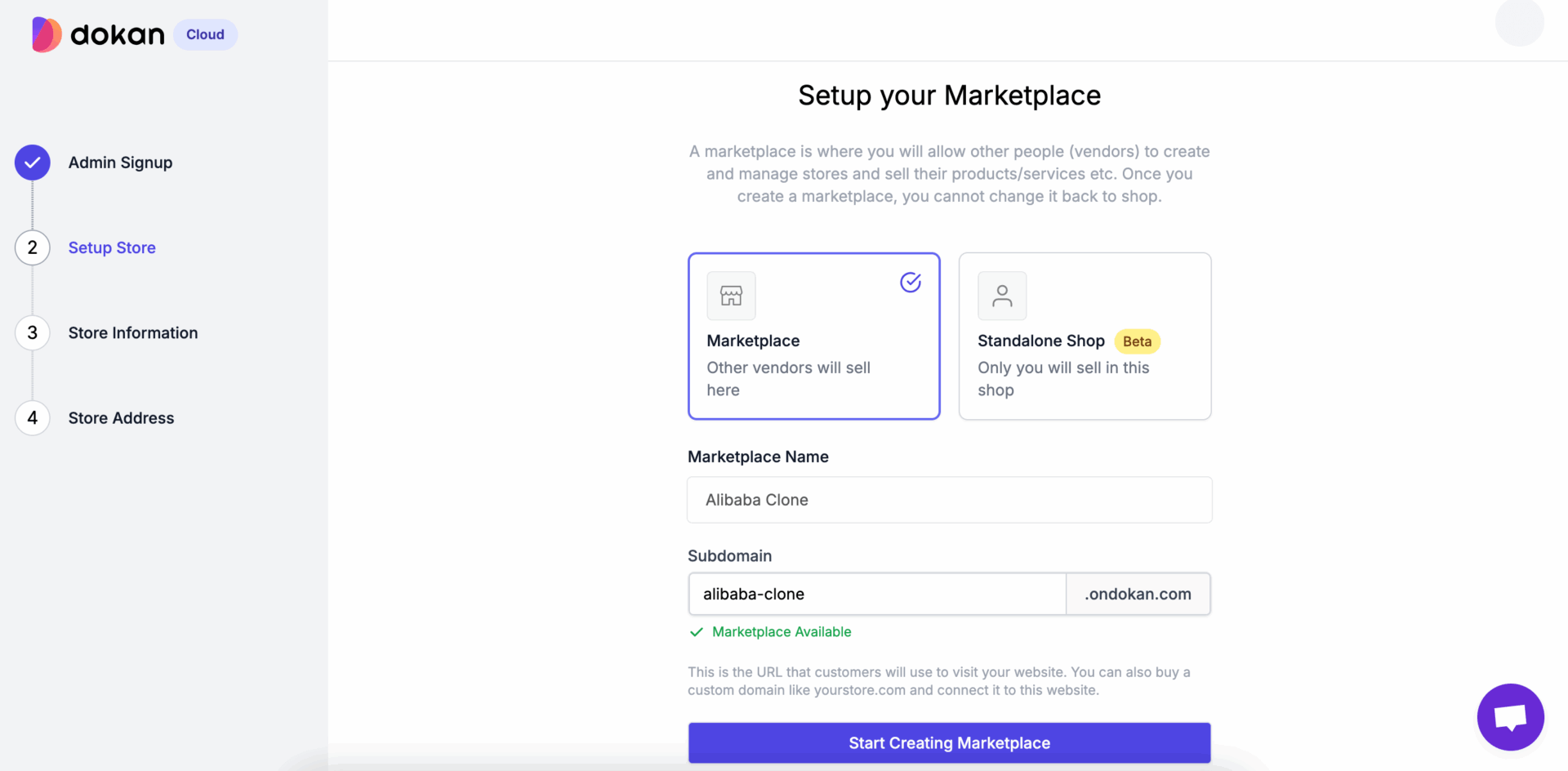

You can read the documentation on the onboarding process to get a better idea.
Step 1.3: Configure Marketplace Settings- General, Payment, Shipment, Tax etc
Now, it is time to configure the complex part. You need to configure the important settings for your marketplace platform.
In the general settings, you can configure the basic details, business details, domain, brand details, etc-
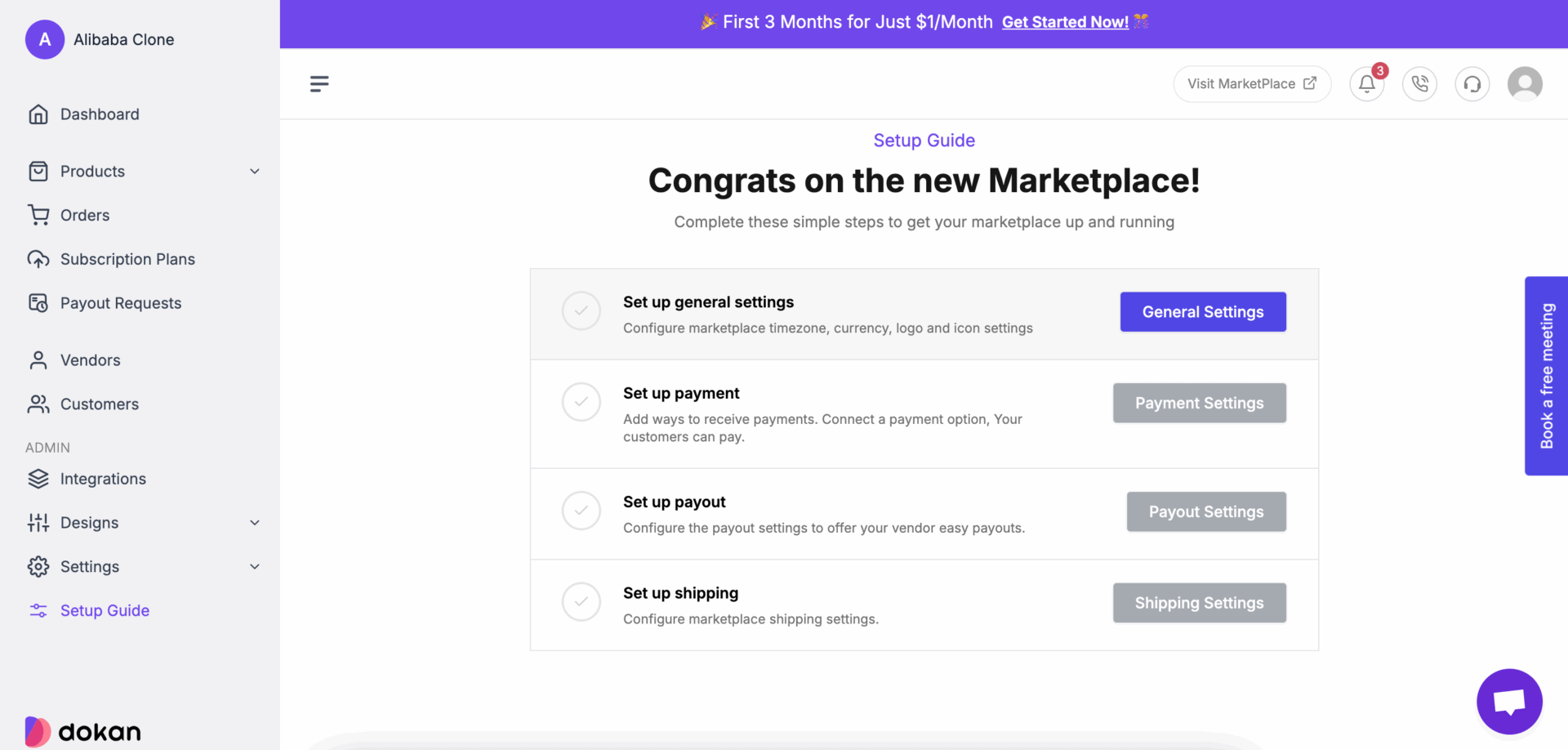

You can start by configuring the payment settings of the marketplace. Dokan Cloud has integration with popular payment gateways like Stripe, PayPal, Mangopay, etc. You can easily connect them to handle the transactions of your marketplace-
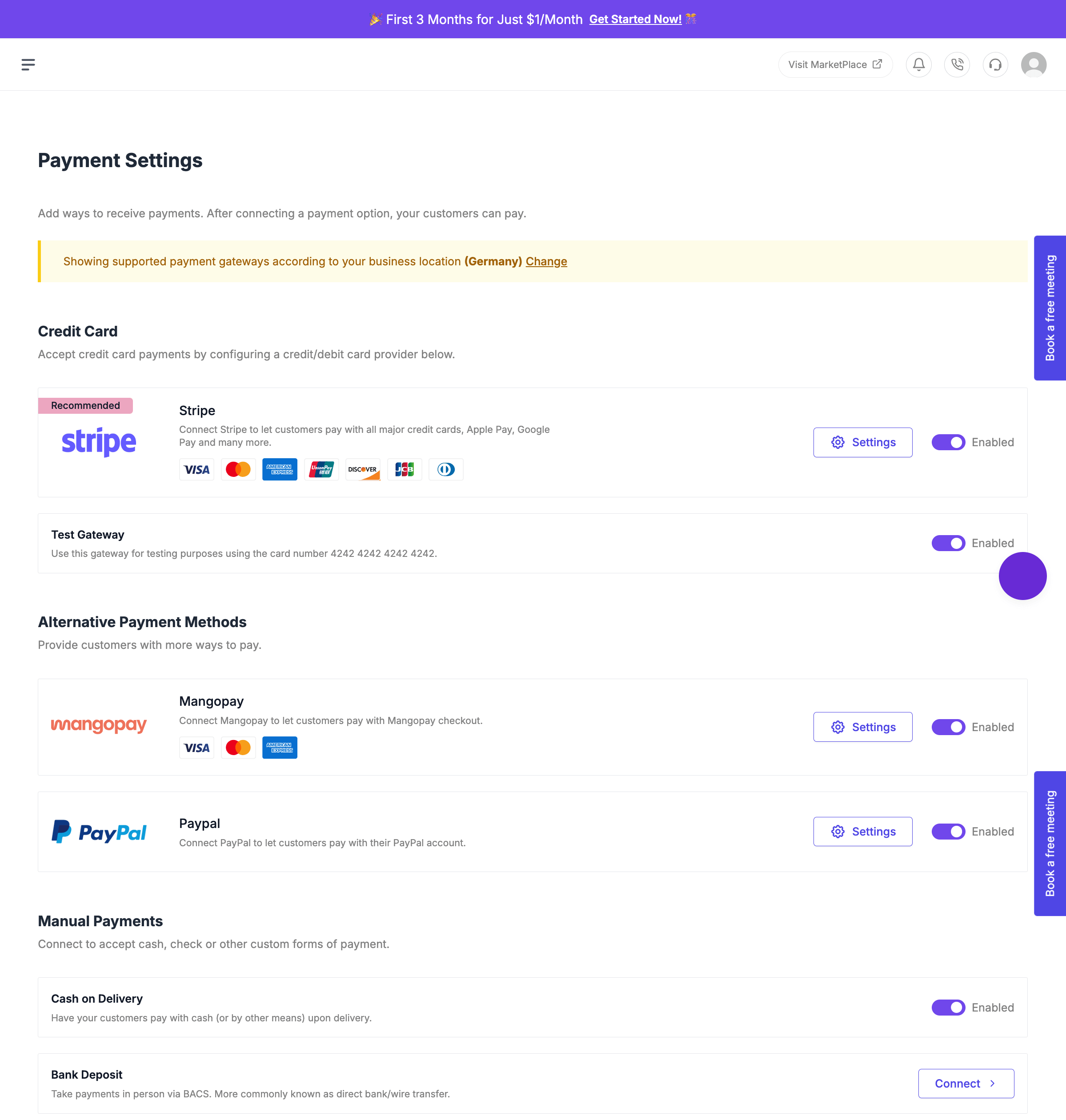

Also, you can set up the shipping settings from the dashboard. You can create different shipping profiles to handle complex shipping calculations, and shipping types (domestic, international) as well-
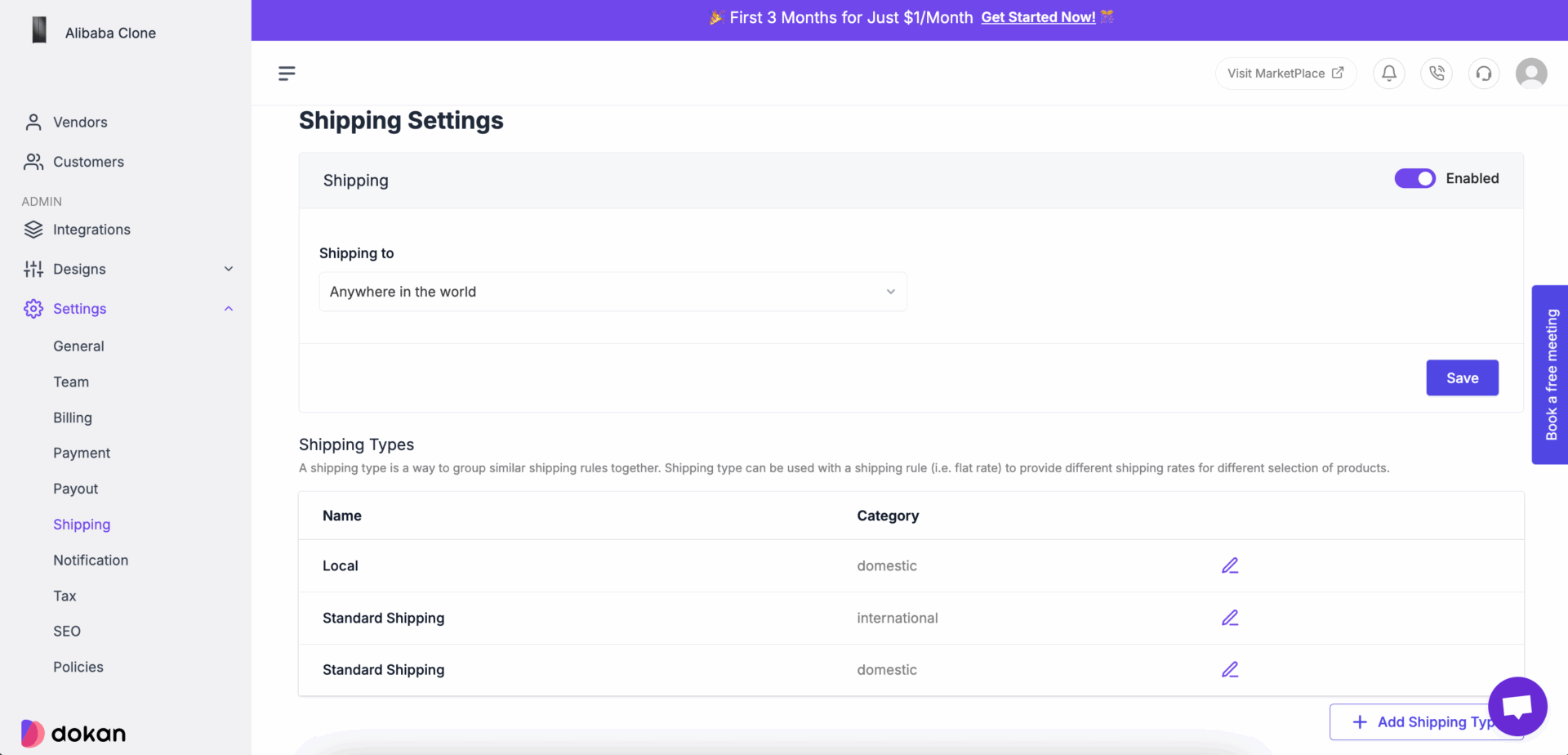

You can read the guide on how to set up shipping for your marketplace with Dokan Cloud.
We have written all the guides regarding the setup of the Dokan Cloud marketplace. Have a read.
Step 1.4: Create a Subscription Plan for Vendors
Now, you need to create subscription plans for your vendors to sign up and start selling on your marketplace. Dokan Cloud marketplace platform lets you create subscription plans with options to add trial period, commission (Fixed and Category), vendor capabilities, SEO, Reports-
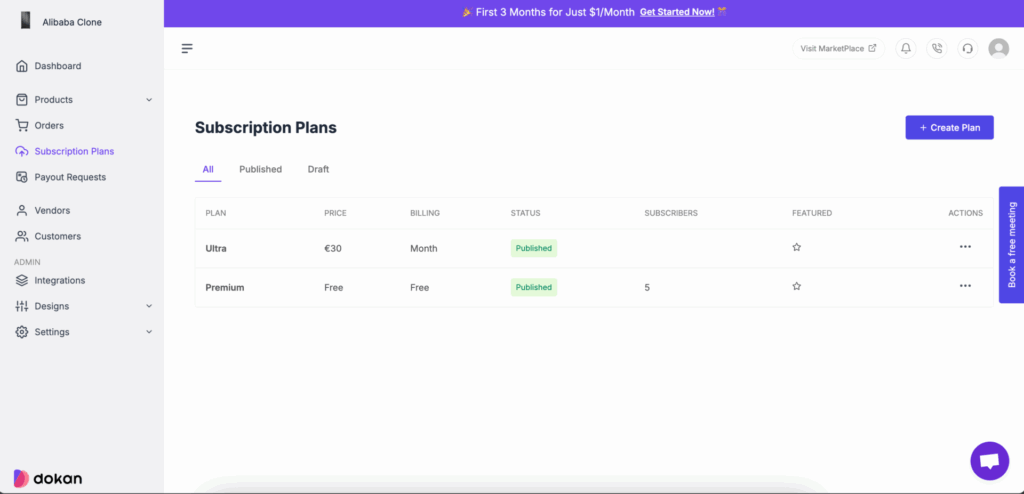

Vendors will be able to choose a subscription plan when they sign up for your marketplace.
After all the configuration, this is what your marketplace may look like-
Step 2.1: Activate Dokan to Create Your Multivendor Marketplace
After configuring WooCommerce, you need to install Dokan to create a multivendor marketplace for your products.
Installing Dokan multivendor is as simple as installing any other WordPress plugin.
You can install the plugin from the WordPress dashboard by,
- Navigating to Admin Dashboard -> Plugin-> Add New-> Click the search
- Type Dokan -> Install -> Activate.
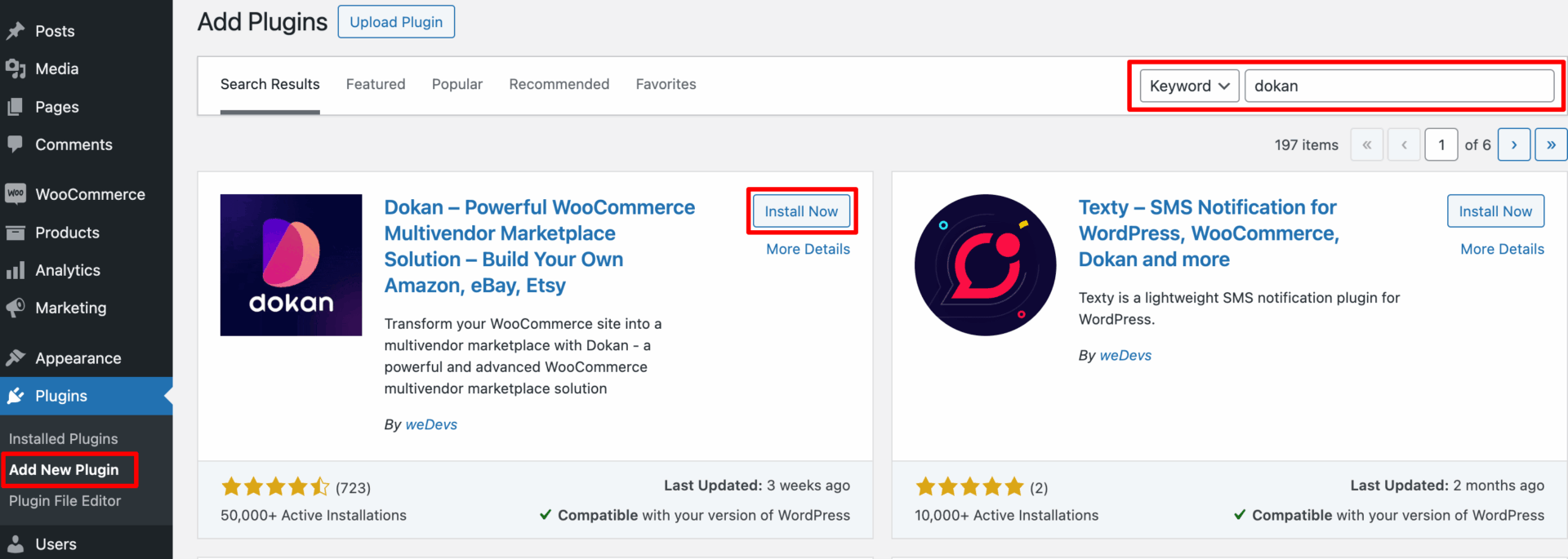

Dokan multivendor will also provide a setup wizard that will help you easily set up your marketplace. Configuring Dokan is very easy by using its own Wizard.
If you are still confused, go through the video tutorial on Dokan installation.
Step 2.2: Install a Dokan Compatible Theme
After installing the Dokan multivendor plugin, you need to install a Dokan-compatible theme. Any theme that is compatible with WooCommerce is also compatible with Dokan multivendor.
However, Dokan has its own theme “Dokani” that you can use for your convenience.
You can download the Dokani theme from the Dokan site.
You can find the themes in WP-Admin-> Appearance-> Themes. But make sure the theme is Dokan compatible.
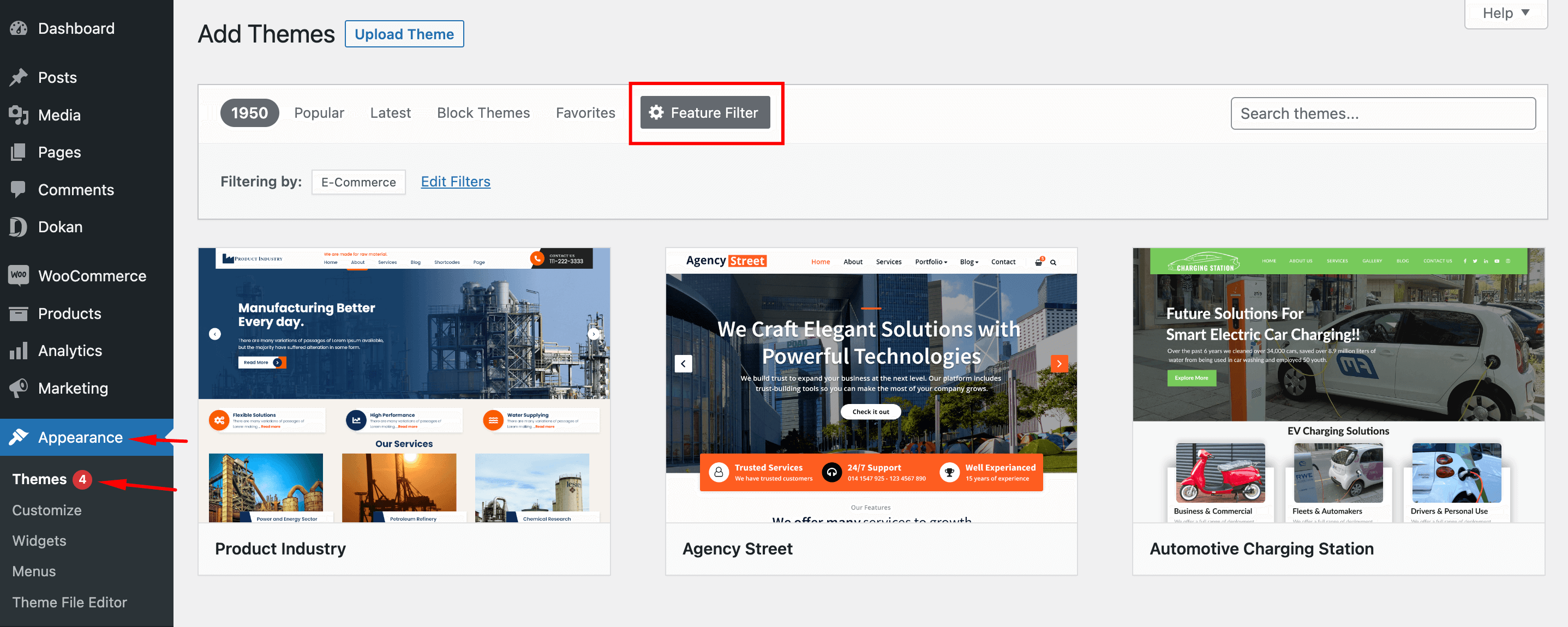

If you choose any other theme, then you will need to customize the theme to make it compatible with your marketplace.


Subscribe to
Dokan blog
Step 2.3: Configure Dokan General Settings
After installing and activating the Dokan multivendor plugin, you now need to configure all the basic settings. You will find all the settings options at WP-Admin–> Dokan–> Settings.
From here you can:
- Set up your store terms and conditions
- Create store category (so that vendors can add different categories for their stores )
- Enable payment gateways (more on this in the next part)
- Configure withdrawal methods (more on this in the next part)
- Allow vendors to upload new products
- Create new tags
- Set new product status
- Configure selling options
- Set privacy policy
You can select the pages for the vendor dashboard, order page, store listing, and terms and conditions page from the Page Settings option.
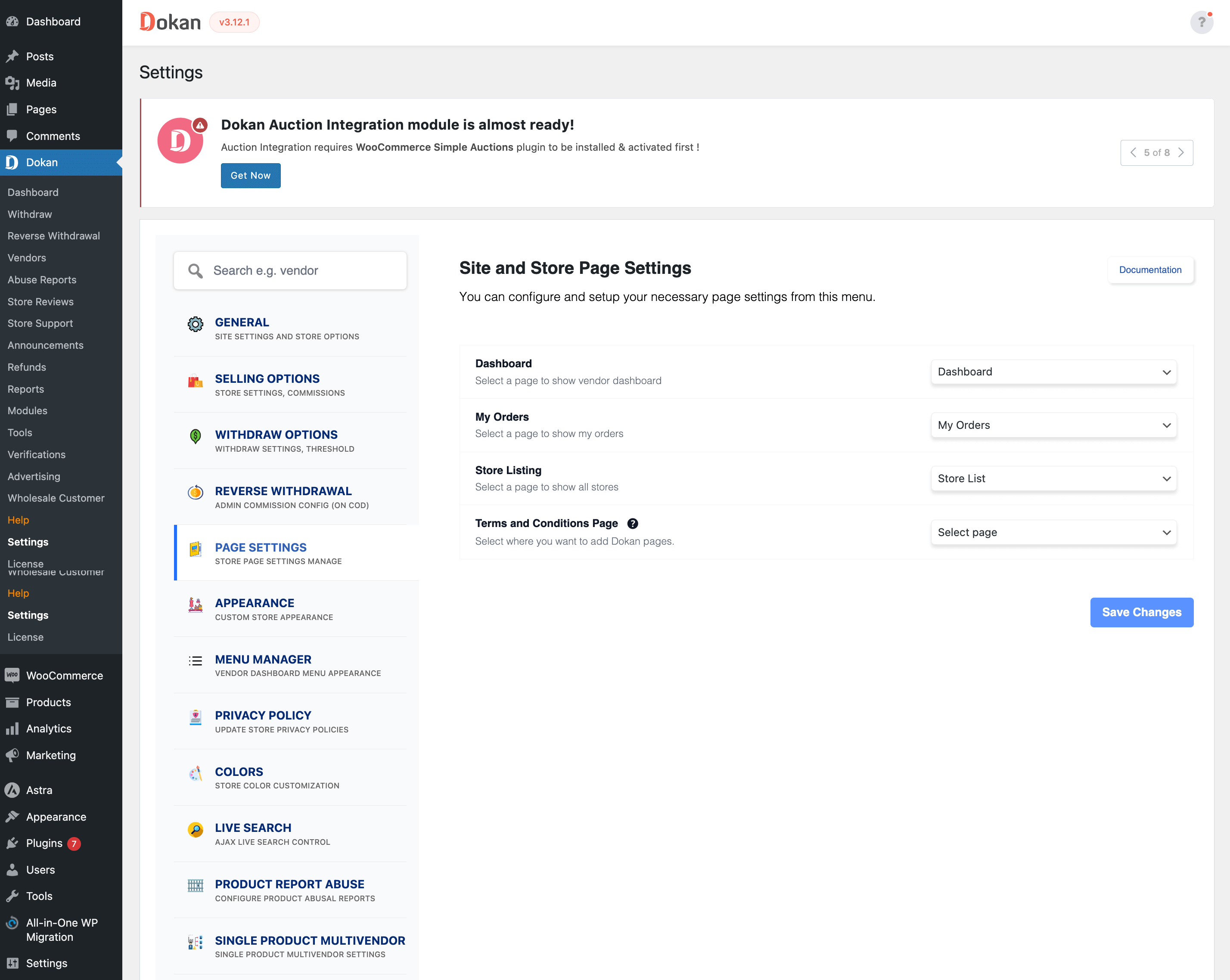

Don’t forget to click the Save Changes button after configuring all the settings. Otherwise, you will lose all your settings.
Also, you need to configure your permalink settings as well. Otherwise, you may get a 404 error on certain pages. Go to WP Admin -> Settings -> Permalinks -> Permalink Settings ->Product Permalinks. Select the check box “Custom Base” for product permalinks and write “/product” on the box.


You have to set your commission rate as well. Go to WP Admin Dashboard -> Dokan -> Settings -> Selling Options -> Admin Commission.
You’ll find different options to insert the percentage or fixed amount. Dokan supports various types of vendor commissions.
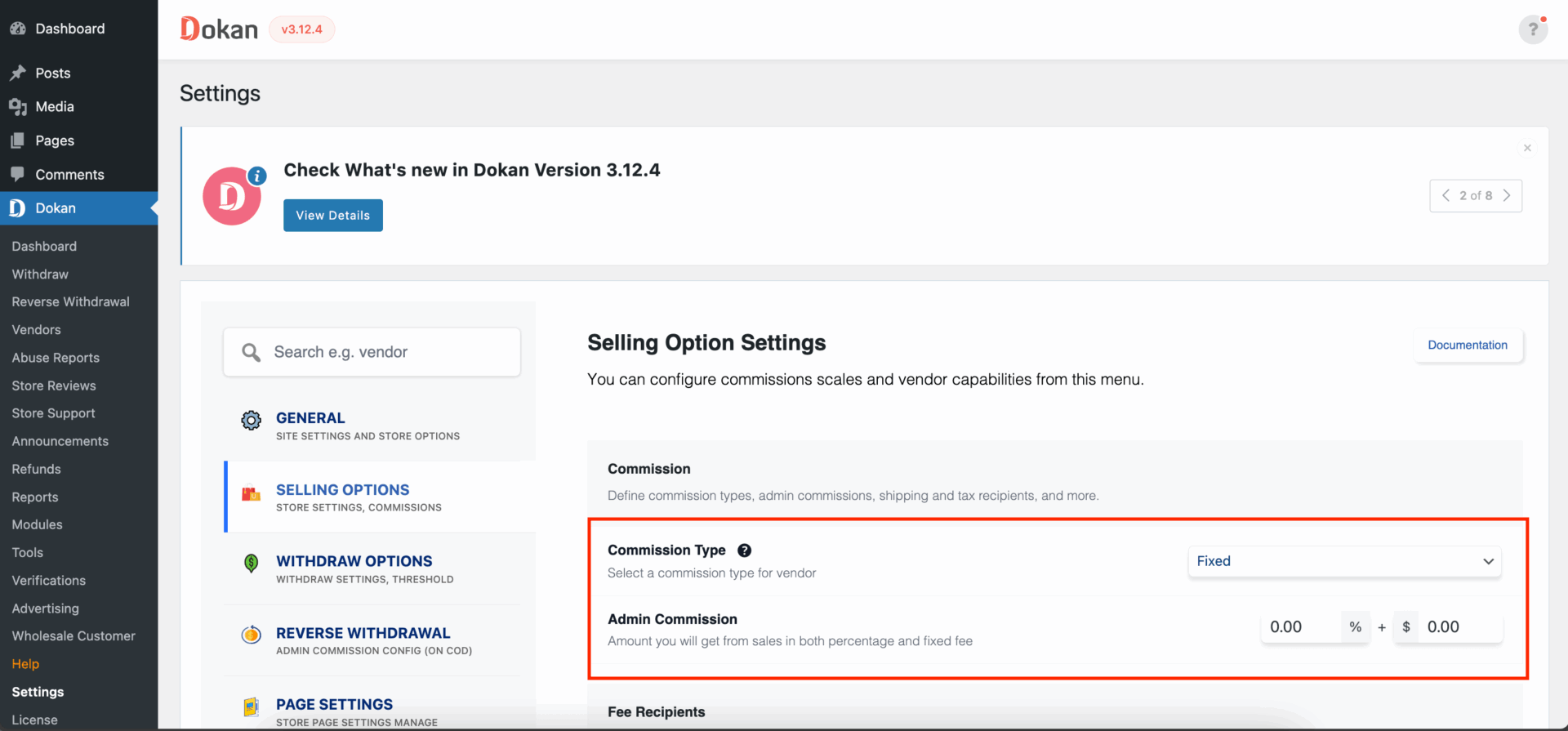

Enable Payment Gateways
The Dokan multivendor plugin supports all WooCommerce-compatible payment gateways. So, you will get a wide range of choices to make the transaction process easier on your marketplace.
With the Dokan free version, you can use non-adaptive payment gateways like check payments, bank account transfers, cash on delivery, etc. You can install the WooPayments plugin to get support for credit cards, debit cards, and other payment methods.
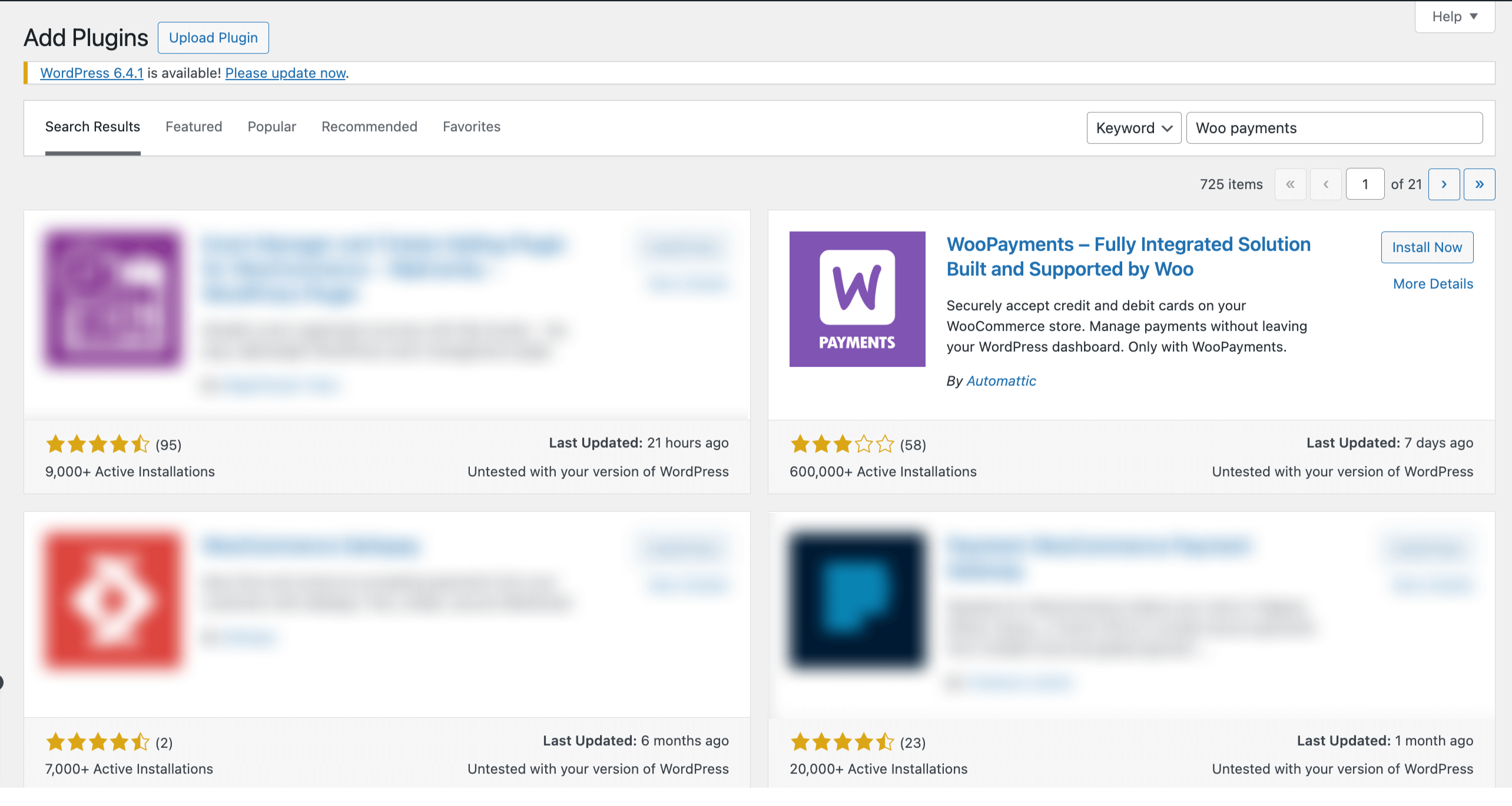

However, if you want your marketplace to support adaptive payment solutions like Stripe Connect and MOIP you need to install the Dokan Pro version.
Enable Withdraw Methods for Vendors
Another vital part of running an online marketplace is to ensure a smooth withdrawal system. The Dokan multivendor plugin helps you take care of this section as well.
Go to WP Admin -> Dokan -> Settings -> Withdraw Options. Here you’ll find options to customize the withdrawal method and set the minimum balance a vendor needs to make a withdrawal limit.
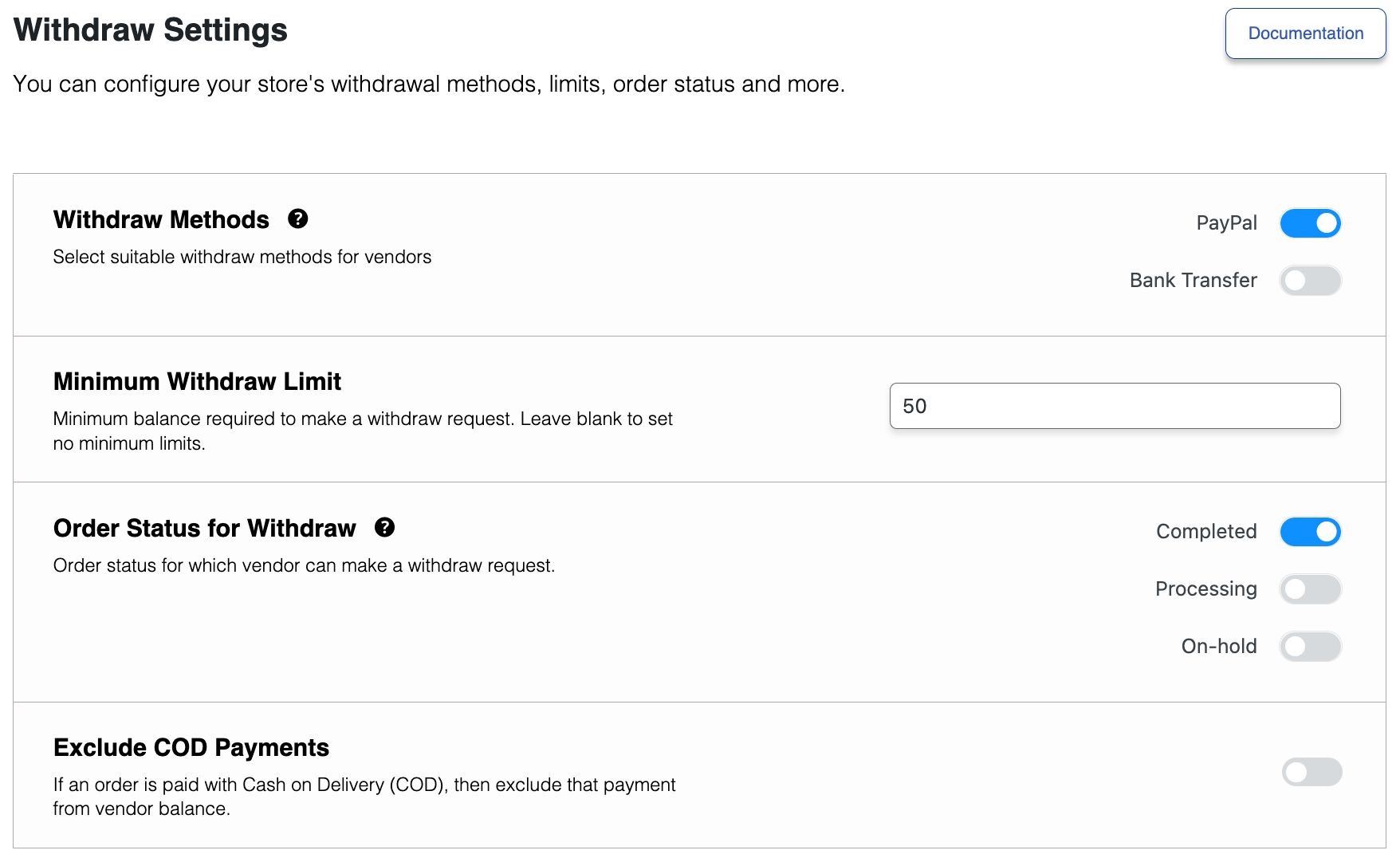

You will get more withdrawal options with the Dokan Pro version.
Step 2. 4: Upload Products and Setup Admin Shop If You Want
This is an optional step. If you want to earn some extra money, you can create your store on your marketplace. All you need to do is enable yourself to sell.
Go to Dokan-> Vendors. There you need to enable selling by toggling the button. You can upload your products by navigating to WordPress Backend -> Products -> Add New.
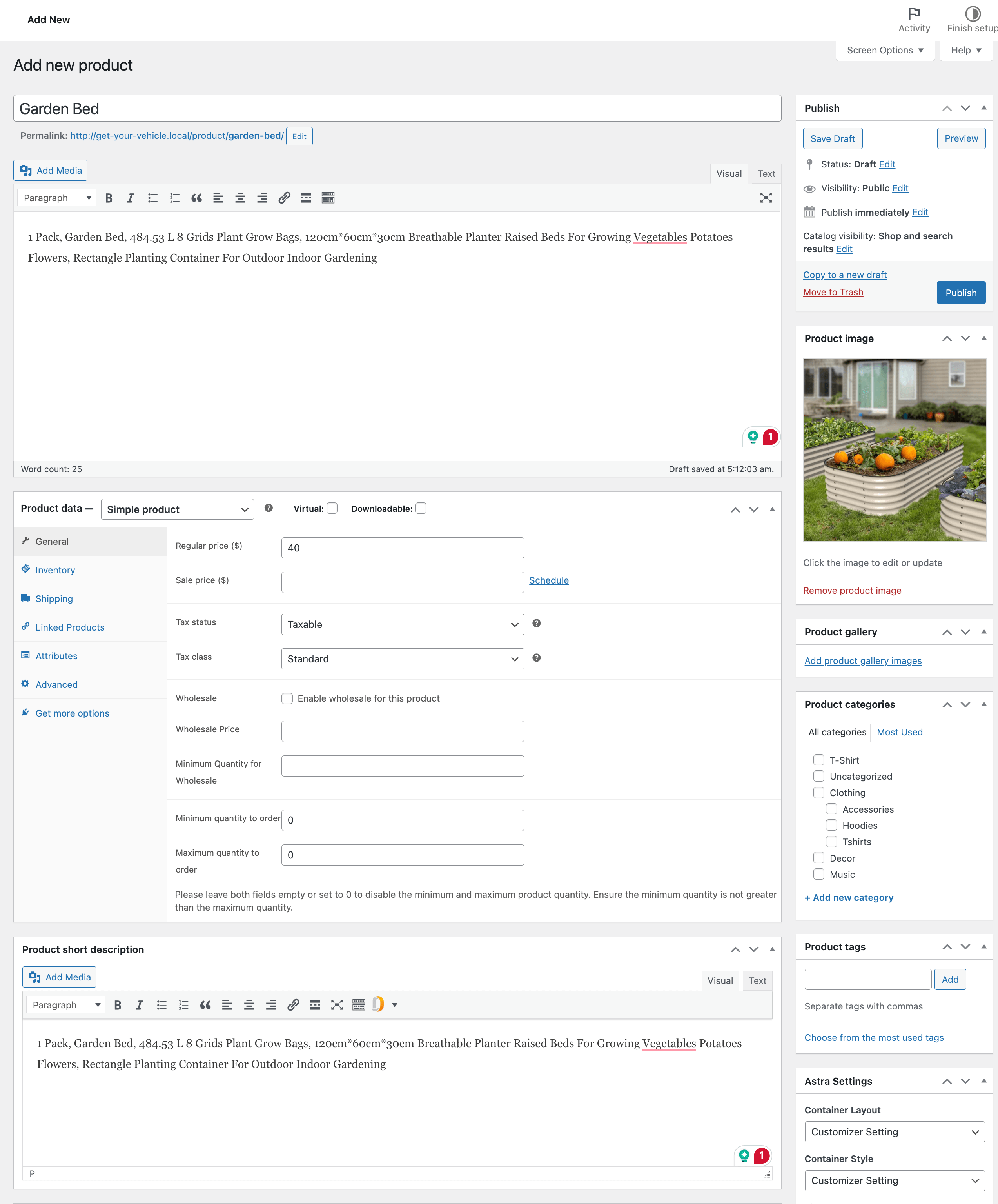

And to upload products from the front end navigate to, WordPress Dashboard -> Vendor Dashboard -> Products-> Add New. Your registered vendors will upload products this way.


Vendors can add functionalities like shipping, taxes, and product attributes from the product creation form.


Step 2.5: Allow Vendors to Sign up to Your Marketplace
Now that you have added all the functionalities to your marketplace, you can invite vendors to sign up for your marketplace.
Dokan multivendor has a default registration form that will help vendors to sign up to your marketplace.
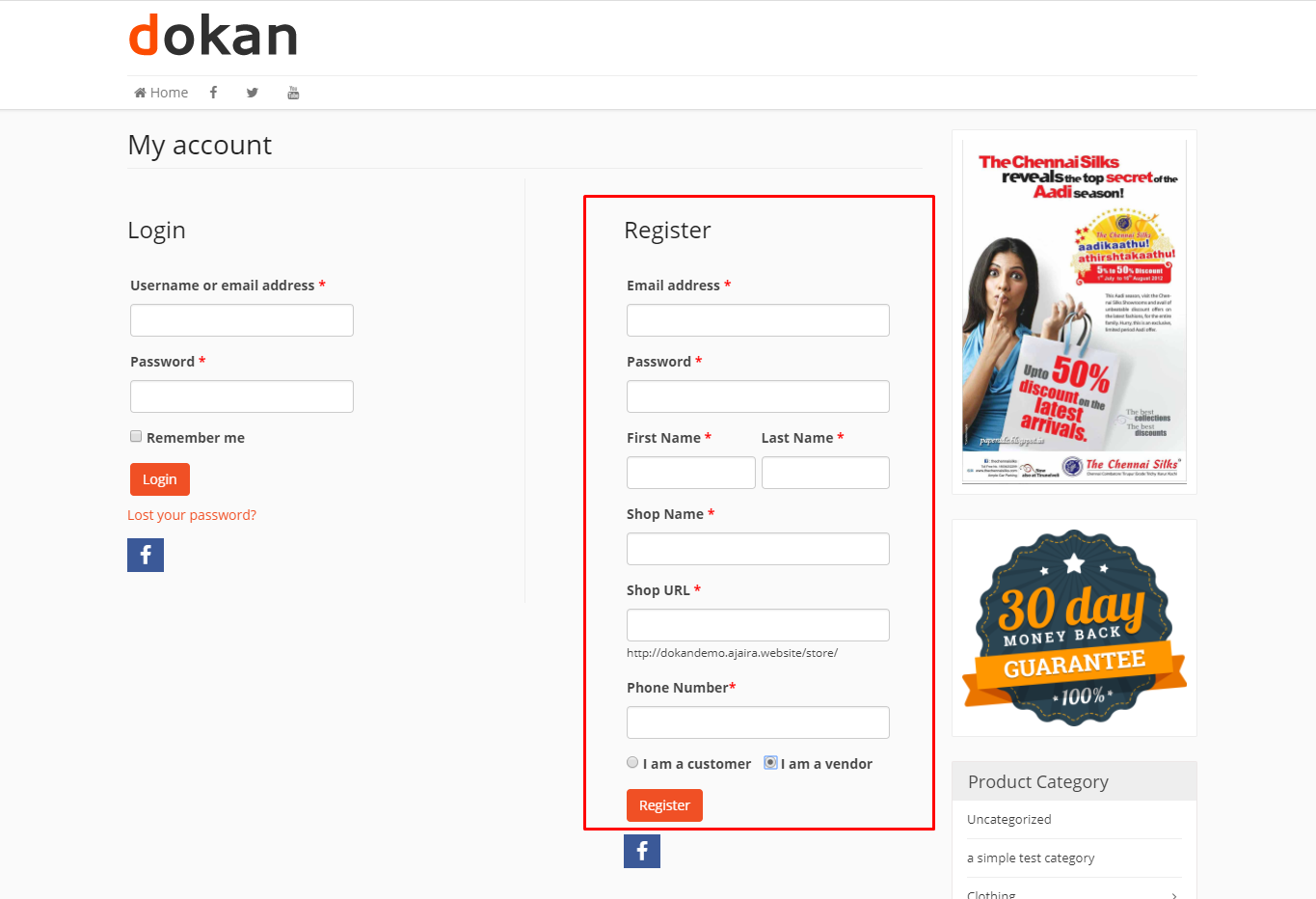

Or you can create customized registration forms with the necessary fields, especially for your marketplace.
For vendors to start selling, you need to enable selling status from Dokan-> Vendors.
Also, if you want the vendors to upload their products, then you need to change the product status from Dokan->Settings-> Selling options. You need to enable the New Vendors Product Upload
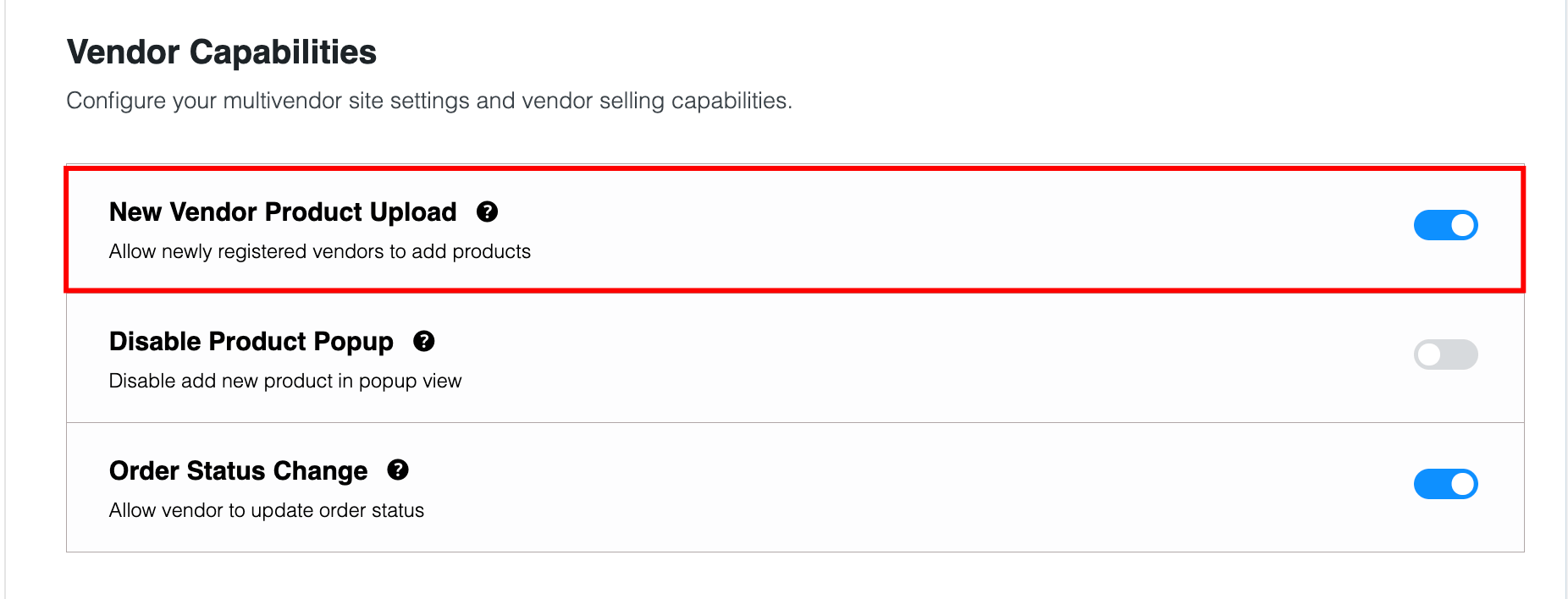

Vendors can upload their products from the front end as we’ve shown above for the admin shop.
You Are Ready to Sell!
Step 3: Onboard Your First Vendor
The first vendors are crucial for credibility. Incentivize them with benefits such as:
- Waive subscription fees for the first six months.
- Featured listings or social media promotions at no cost.
- A dedicated account manager to assist them with onboarding and product listings.
For an eco-friendly marketplace, onboard vendors specializing in biodegradable packaging or solar-powered gadgets. Partner with them to create case studies that highlight their success.
According to research by McKinsey, marketplaces with an onboarding process see 50% higher retention rates for their vendors.
Step 4: Launch Your Marketplace
A strategic launch ensures a strong start. Steps include:
- Beta Launch: Test with a small group of vendors and buyers to iron out issues.
- Launch Campaigns: Use platforms like Google Ads and Facebook to promote the launch.
- Content Marketing: Publish blog posts, videos, and case studies to highlight vendor success stories.
Organize a virtual event showcasing top products on your platform. Invite industry influencers and buyers to participate, creating buzz.
According to HubSpot, businesses that blog generate 67% more leads, making content marketing a valuable tool during the launch phase.
Step 5: Go for Promotion
After launching, promotion is critical for eCommerce store growth. Strategies include:
- Search Engine Optimization (SEO): Optimize product pages and blog content to rank higher on Google.
- Pay-Per-Click (PPC) Ads: Run targeted ads on platforms like Google and LinkedIn.
- Referral Programs: Encourage existing users to bring in new vendors and buyers by offering discounts or credits.
- Influencer Marketing: Collaborate with industry influencers to showcase your marketplace.
For example, a marketplace for eco-friendly products can partner with sustainability bloggers to highlight unique products available on the platform.
eMarketer reports that influencer marketing can deliver an ROI of up to $5.20 for every $1 spent, making it a cost-effective promotion strategy.
Want to Create an
Furniture Marketplace?
Become a Competitor of Walmart!!
So what do you think? At first, it looked like creating a marketplace similar to Walmart was difficult. But after going through our article, doesn’t feel like it now right? You can easily create a marketplace like Walmart.
But remember, business is not all about creating a platform and providing all the features. You need to ensure your users know about you and the features you provide.
Without the right eCommerce marketing strategy, you will be just another fish in the sea. But you need to become a great white shark, found rarely in the sea.
Be proactive, make a solid marketing strategy, be involved with the team, communicate, and see where that takes you.
Do let us know how your experience has been in the comment section.
Subscribe to
Dokan blog
We send weekly newsletters, no spam for sure!


[ad_2]
منبع:dokan


